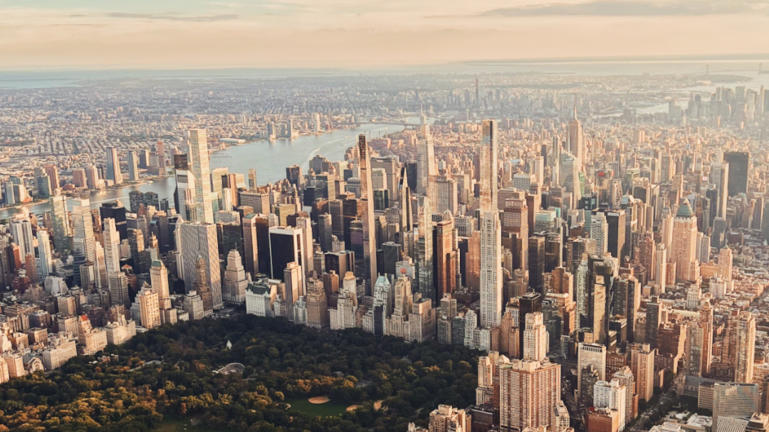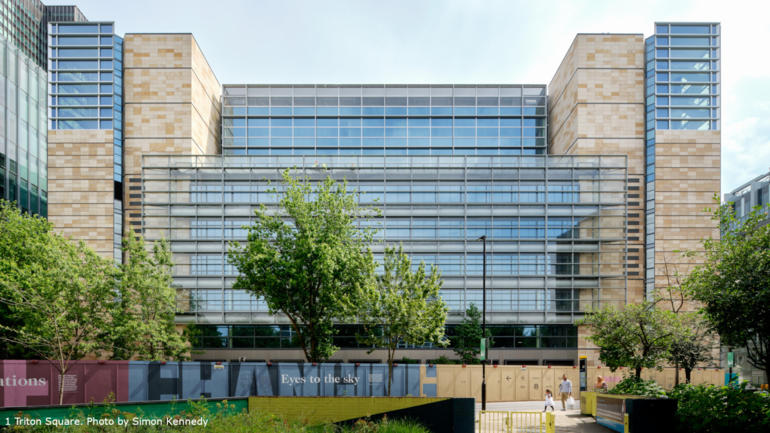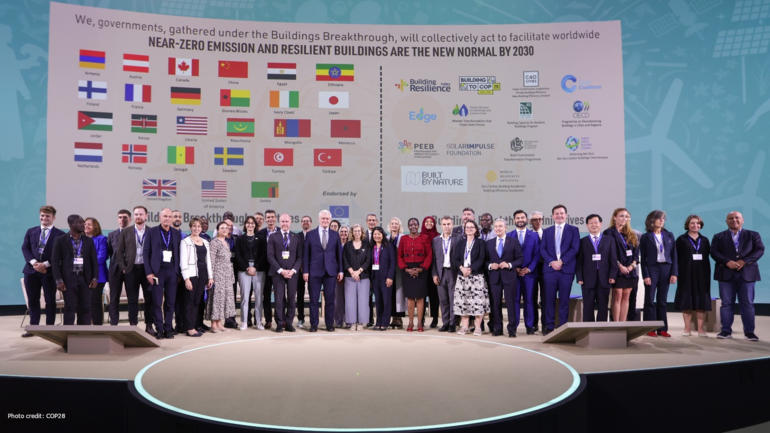As the world stands at the precipice of a global biodiversity crisis, it is not just the risks that require mitigation; it is also fundamental for the business world to appraise and act on the opportunities. The Biodiversity COP15 this year is set to be the highest attended in history. This follows COP27, which saw an unprecedented appreciation of nature-based solutions. It is in this context that the built environment system finds itself at the crossroads, both as a significant contributor to the crisis and as a potential agent of change, with land and sea holdings that offer real potential for solutions.
The built environment sector must operate within planetary boundaries and focus on nature-positive goals that offer a path to thriving ecosystems.
But what does nature positive mean for the built environment, and what actions should companies take to trigger transformative change across the sector? These are some of the questions driving our work on developing a nature-positive roadmap for the built environment. Building upon the recently published Business for Nature discussion paper, our roadmap will cement a shared definition of nature positivity in the built environment and provide clear and tangible steps to improve a company’s footprint in the natural world.
As a first step toward building the roadmap, we have, in collaboration with our member companies, identified key insights that will guide our work as we advance. These insights include opportunities and risk mitigation actions that companies can leverage, regardless of whether they are embarking on a whole nature positive strategy or seeking to improve a specific aspect of their business. Further stakeholder interviews, subsector-specific analysis, identification of spheres of influence and examples of best practices will inform phase I of the roadmap, to be launched in 2023.
Key insights
1. The built environment sector can be a key contributor to the Global Goal for Nature
Buildings and infrastructure making up the built environment are everywhere. They are at the core of our development plans and global transitions. In terms of new developments and redevelopment, the volume of activity attributed to the built environment is tremendous. For example, by 2030, the urban land cover will increase by 1.2 million km2, including the likely addition of 10 so-called megacities (population over 10 million). By 2050, the size of the built environment is set to double as the global urban population reaches 7 billion. The World Economic Forum has identified three socio-economic systems with significant opportunity and responsibility to reverse nature loss, one of them being the built environment sector. With such growth predicted, the built environment sector, which is already estimated to impact nearly one-third of threatened and near-threatened species, will have an even more significant footprint. The harmful impact on nature and biodiversity comes in many forms – land intake, habitat fragmentation and disturbances during construction, not to mention the harmful indirect effects of upstream and downstream processes.
At the same time, the built environment has an untapped potential to offer solutions, especially when taking a circular economy approach. Negative impacts can be reduced, for example, through the reuse of materials, and positive impacts on nature can be made. The built environment offers fertile ground for taking proactive measures to protect, sustainably manage and restore nature through nature-based solutions. Recently, Toronto became the first North American city to require green roof construction on new developments by law for the specific purpose of reducing local ambient temperature and saving energy, but also to improve the city’s biodiversity, air quality and thus, public health.
2. We need tailor-made roadmaps at the subsector level using a common language
The built environment is a highly diverse sector encompassing many different types of infrastructure, each with its own upstream and downstream dependencies and impacts. A few examples on the interlinkages between nature loss and climate risks speak for themselves. The urban heat island effect is a typical phenomenon in urban areas. Buildings, roads and pavements absorb solar heat leading to higher temperatures especially in summertime. It can be addressed by investing in urban forests, more trees in the streets and adaptive building such as green roofs and green walls.
Another example of nature-based solutions relates to mitigating the risk of flooding, which is exacerbated by impermeable soils in urban areas and transport infrastructure. Investing in wetland restoration for buffering water and in sustainable urban drainage systems for better infiltration could largely solve this problem. In contrast, flood risks associated with marine and coastal environments mostly relate to rising sea levels and storm surges. Combining hard infrastructure in coastal defense structures with nature-inclusive design options provides opportunities for nature development and concomitant flood control. Therefore, for a nature-positive roadmap to have real impact, actions must be tailored to specific features of the following subsectors: buildings, urban development, transport, marine and coastal and extraction infrastructure.
3. Materials are material
The built environment’s footprint on nature also includes the impact of the materials being used in this sector. The construction industry is one of the top three most dependent economic sectors on natural resources for raw materials. While the high-risk dependency on nature associated with materials is clear, the impact of material use on nature is less clear than it is for GHG emissions. For example, timber is often quoted as being one of the more sustainable materials to use for construction, especially related to emissions. But the full picture of what a global increase in demand for timber would mean for nature must yet be fully accounted for.
Another example is sand and gravel extraction, two of the most extracted materials in the world, making up 79% of the natural resources used by the built environment. The need for these resources exceeds realistic replenishment rates and can directly destroy river and coastal habitats. Supporting the natural ecosystems can address this unbalance, such as the Sand Motor project in the Netherlands that promotes natural dune growth.
True transformative change can be achieved by careful selection of construction materials and by maximum reuse of construction materials. A hierarchy of best actions can help business make the most nature-positive choices. For example, in Switzerland, 20% of construction and demolition waste from the extractive sector is used for cement. Ultimately the aim is circularity across the various material value chains. Another example is the Western Cape Industrial Symbiosis Programme, a free facilitation service that helps companies identify mutually beneficial opportunities to exchange resources. By matching companies’ supply and demand for secondary raw materials (materials recycled from waste), they can identify business opportunities to use unused or residual resources.
4. Nature-inclusive design has to be embedded from the start of every project
Consistently embedding the nature-positive idea in the design phase of the new and redeveloped buildings and infrastructure projects is crucial for long-term nature-positive outcomes that persist to deliver services to future generations. For businesses involved in landscaping, there is ample opportunity to embed nature-positive measures in the design, such as creating habitats for specific species groups or semi-natural ponds instead of concrete water storage basins. Innovation plays a key role here. For example, modular habitat tiles that mimic the living surface of marine plants and animals can be attached to shoreline infrastructure to facilitate the colonization of a new habitat by species, as demonstrated by the Living seawalls project of the Sydney Marine Institute. To achieve a nature-positive built environment, further guidance on what this means for the different subsectors is required in terms of strategy and implementation.
5. We need deep collaboration along the full value chain based on transparency
As key actors in the supply chains of almost all public and private entities, the companies that make up the built environment sector can leverage the nature-positive idea by advocating for positive incentives in the various phases of development, for instance, by embedding nature-positive criteria in existing certification programs for the built environment. Overall, targeting leverage points across the whole value chain will be key. This will necessitate collaboration at sector, landscape and supply chain levels. To enable this collaboration, transparency is required on KPIs, baselines, disclosure and targets so that these can be embedded into the project cycle in private and public sectors.
Specifically for tender procedures, there could be higher scores for nature-positive proposals or proposals that trigger transformative change towards nature positivity. The Hague in the Netherlands implements a scoring system of the municipality to promote nature-inclusive building, focusing on legislative requirements for nature as well as the provision of ecosystem services. Incentivizing the investment community and partnerships will be key to take action on tender procedures.
What’s next
The key insights highlighted in this article will inform phase I of the Nature positive roadmap for the built environment, including priority actions.
Building on a shared narrative of what nature positive means for the built environment, we will develop indicators to measure outcomes at different scales, such as the building site, surroundings and the supply chain, to inform target setting, actions and related disclosures.
Are you interested in joining this effort? Reach out to Claudia Schweizer, Manager, Built Environment, at schweizer@wbcsd.org.









